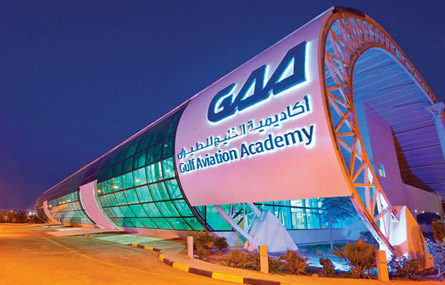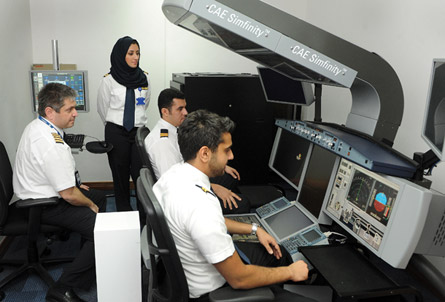Gulf Aviation Academy will announce an expansion to its facility next to Bahrain's international airport at the show, kicking off what chief executive Tim Shattock calls a "defining year in terms of growth" for the former Gulf Air training department.
GAA was formally launched as an independent entity under the ownership of state holding group Mumtalakat at the previous Bahrain air show in 2010. Since then, it has doubled its capacity to four full flight simulators: two CAE 5000 Airbus A320 machines, a CAE 7000 Embraer 170/190, and an Airbus A330/340.
 |
|---|
 |
| © Gulf Aiviation Academy |
At set-up, the organisation was still closely tied to the needs of its former airline parent. However, GAA has been pushing hard to attract third-party business and today only 35% of its revenues come from Gulf Air. Shattock expects that percentage to continue falling, as some "big name" airlines - he will not name them - use the facility to outsource training they do not have capacity for in-house.
Shattock, however, is keen to change the profile of the pilot training GAA provides. At the moment, 85% of training is sold "dry" - in other words, the client simply rents time on the equipment and provides its own instructor. Shattock aims to provide more wet contracts. "We want a close partnership with airlines," he says. "We have no interest in conveyor-belt training."
One of Shattock's objectives is to continue expanding the range of training GAA provides. Cabin crew provision is a major earner: it spent $2.5 million on cabin-crew evacuation trainers in 2011 and it has started offering ab initio courses for entry-level pilots and, along with sister entity Gulf Technics, European Part 147 engineering qualifications.
"Ultimately, we want to be involved in training all sorts of aviation personnel, including handling dangerous goods and ramp personnel," he says.
Source: Flight International
















